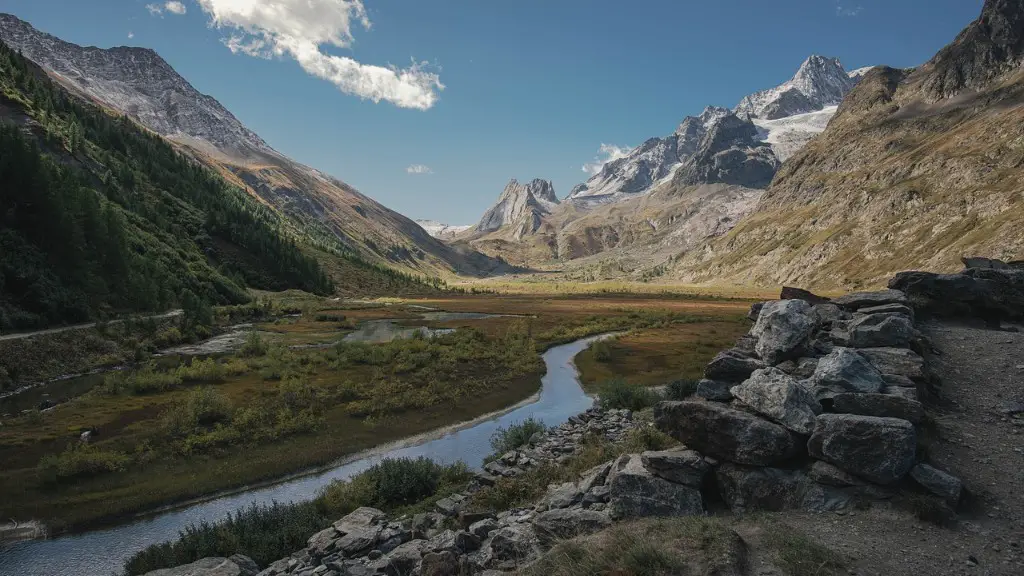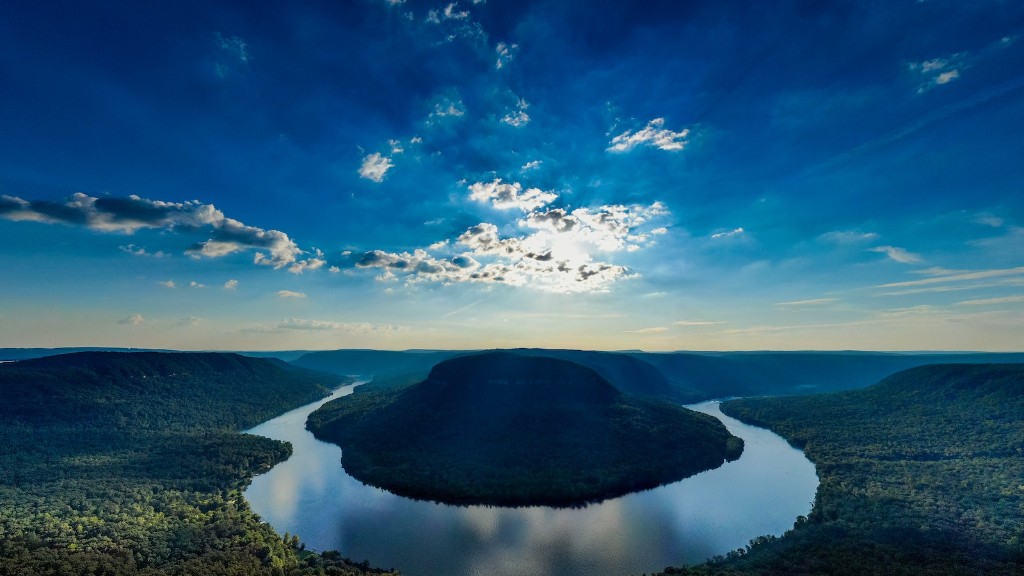The Missouri River
The Missouri River is the longest tributary to the Mississippi River, making up over two-thirds of the entire length of the Mississippi. It’s an important waterway for transportation and also for supplying water for irrigation, and acts as an important breeding ground for a variety of fish species. It begins in the Rocky Mountains of Montana, stretching for 2,341 miles, before merging with the Mississippi near St. Louis, Missouri. On its path it passes through ten states, with the main tributary rivers including the Platte, Yellowstone and Milk.
The Missouri River is famed in the United States for its fierce roar and whitewater rapids, and it has been a tourist attraction since the 19th century. It’s been explored, engineering marvels have been constructed, and plants and animals have made it their home. Native American tribes, such as the Mandan, Lakota Sioux, and Pawnee also depend on the Missouri River for their sustenance.
The Ohio River
The Ohio River is the largest tributary to the Mississippi, rising in Pittsburgh on the Pennsylvania-Ohio border and flowing southwest 981 miles to the Mississippi in Cairo, Illinois. It’s a major transportation corridor for goods and goods, providing transportation for commodities as diverse as coal, grain, oil, chemicals, and many others. Its tributaries are the Allegheny, Effigy, Cumberland, and Tennessee rivers.
The Ohio River is a great source of recreation, especially in summer when people use boats, canoes, and kayaks to explore its waters. Fishing is also a popular activity, and the Ohio River supports a large variety of fish including bass, trout, walleye, muskellunge, and many more. The river also provides water for a variety of plants and animals and serves an integral role in the local ecology.
The Arkansas River
The Arkansas River is the second longest tributary to the Mississippi, beginning in the Rocky Mountains of Colorado and stretching 1,469 miles to its mouth in Arkansas. As the Arkansas River moves through Kansas, Oklahoma, and Arkansas it collects the tributaries of the Cimarron, Canadian and Verdigris rivers. In addition to acting as a navigation and transportation corridor, the river also provides important habitat for many species, including a variety of fish, amphibians, reptiles, and mammals.
The great importance of the Arkansas River rests in its role as a major source of water for crops in the region. It has been heavily dammed, and channels constructed for irrigation, providing water for farmers as far away as Louisiana. In addition, it is an important waterway for recreational activities, including hunting, fishing, and boating.
The Red River
The Red River runs 1,360 miles from its source in the Great Plains of North Dakota south to its mouth at Jefferson, Texas, before merging with the Mississippi River. Its tributaries are the Peace, Souris and Pembina rivers. Although it has experienced some flooding in the past, it is nonetheless an important part of the ecosystem, providing habitat to a variety of birds, fish, and mammals.
The Red River has long been an important trading route between Native American tribes, and was an important part of the settlement of the Plains states. The river is still important today, serving as a source of irrigation for farmlands in the region and providing water for millions of people. It’s also an important source of recreation, and its hunting and fishing regulations are some of the most liberal in the Midwest.
The Minnesota River
The Minnesota River is the third longest tributary of the Mississippi, with a length of 332 miles from its origin by the Big Stone Lake in southern Minnesota to its mouth at Mankato. It’s a major tributary of the upper Mississippi, and it’s important for its role as a source of irrigation for the region’s farmland. It’s also used by recreational boat traffic, with its lakes and rivers providing hunting, fishing, and camping opportunities for many visitors.
The Minnesota River’s tributaries are the Saint Croix, Blue Earth and Cannon rivers. The upper Minnesota River is an important corridor for migratory birds, and its wetlands provide critical habitat for game species, like deer. It also provides water to local cities and serves as a major habitat for fish species, including walleye and northern pike.
The Illinois River
The Illinois River is a major tributary of the Mississippi River, beginning in southwestern Wisconsin and flowing 305 miles in a southerly direction before entering the Mississippi at Grafton, Illinois. Its five main tributary rivers are the Des Plaines, DuPage, Kankakee, Fox and Sangamon, while its many smaller tributaries are the Sugar and Aroma. Historically, the Illinois River was an important transportation route for Native Americans and early settlers, while today it is used by recreational boaters, fishermen, and other recreational users.
The Illinois River is important for its ecosystems, providing a habitat for a variety of flora and fauna, including several endangered species. The river has also served an important role in commercial activities, including the transport of agricultural commodities within the region. In addition, it’s an important source of water for local communities.
The Atchafalaya River
The Atchafalaya River is the southernmost tributary of the Mississippi River, stretching 550 miles from its origin in the Arkansas-Louisiana border to its mouth at Morgan City, Louisiana. Its tributaries are the Boeuf, Ouachita and Tensas rivers, as well as other smaller creeks and Bayous. The Atchafalaya River is an important source of water for cities and towns in the region, while also providing habitat to a variety of fish and wildlife. It’s also an important source of irrigation for farmers in the area.
The Atchafalaya River is also known for its spring floods, which bring an influx of water to the region, replenishing delta wetlands and re-energizing fisheries. It’s also a source of recreation, with its abundant fishing and boating opportunities, as well as extensive hunting and bird watching opportunities. All of these recreational activities attract tourists to the area, as well as providing important economic benefits to the region.



